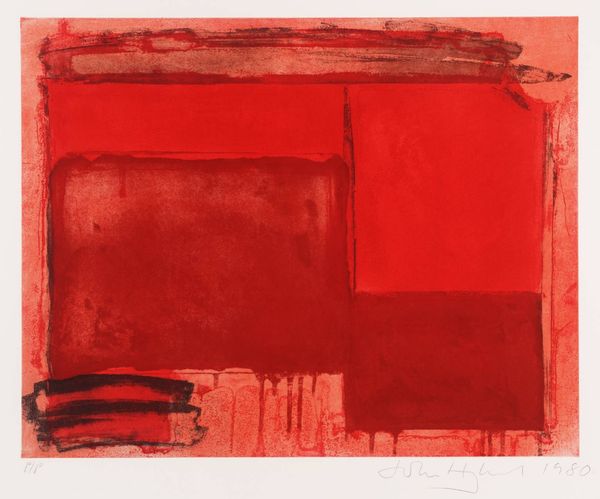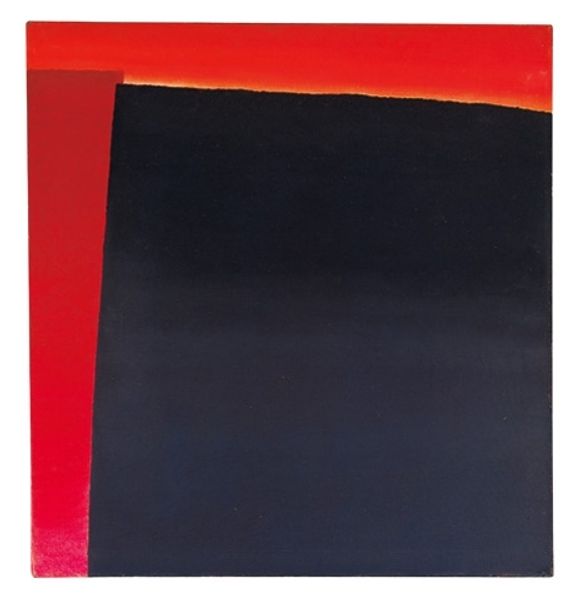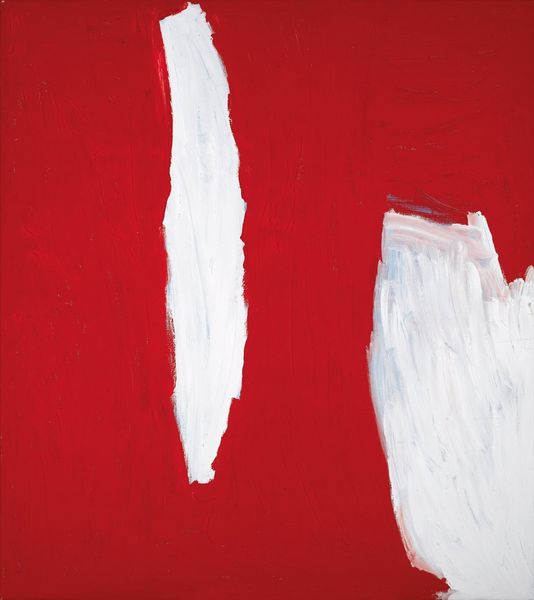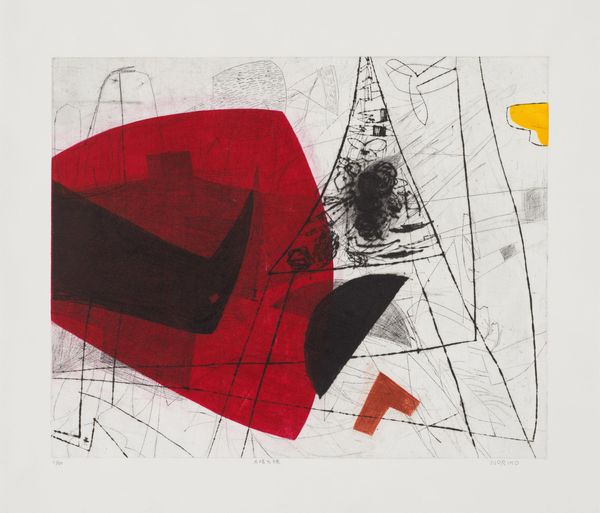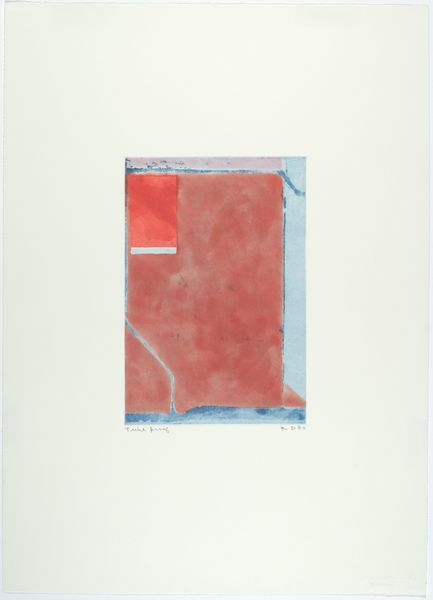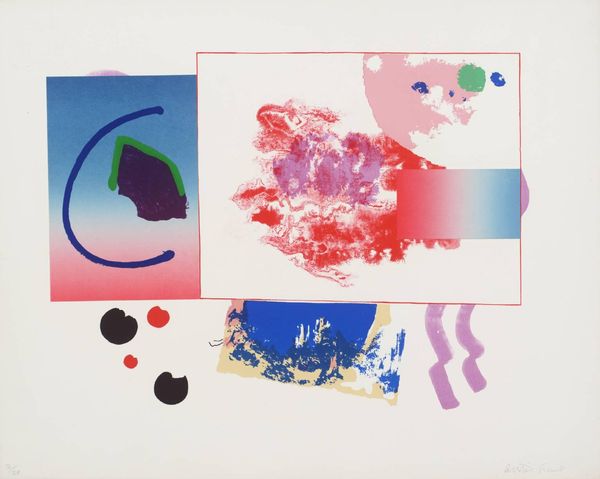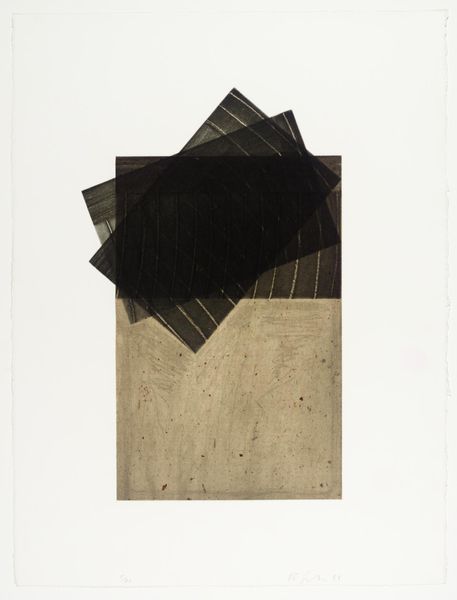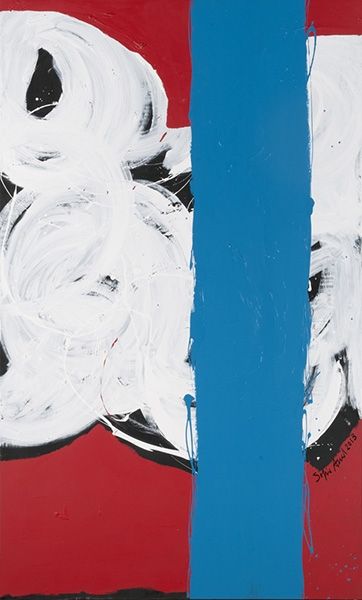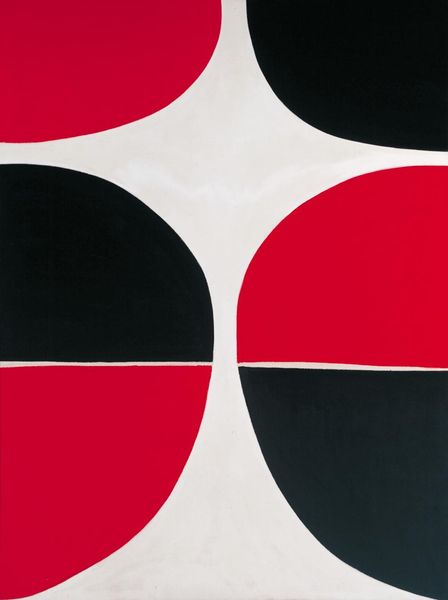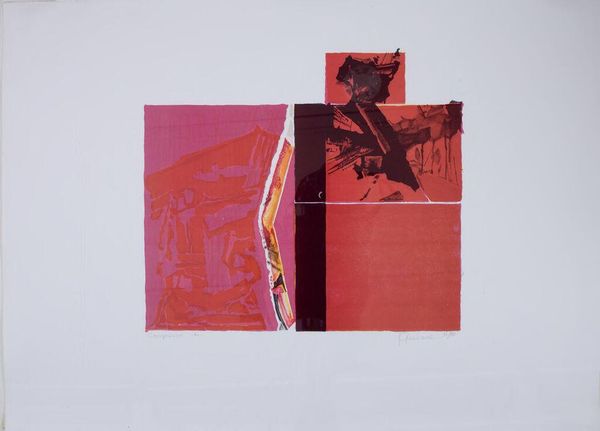
Copyright: Blinky Palermo,Fair Use
Curator: What a striking arrangement of shapes and colors! Editor: Yes, it’s bold! Immediately, I see a tension between the smooth blocks of color and those energetic brushstrokes. What can you tell me about this piece? Curator: This is "Who knows the beginning and who knows the end II" by Blinky Palermo, completed in 1976. It's an acrylic on canvas work that epitomizes his minimalist yet vibrant approach to abstract painting. Note Palermo's focus on the geometric arrangement and use of color, elements which converge into pure visual sensation. Editor: Right. And look how Palermo divides the canvas into two distinct panels. Does that bisection imply a dialogue, or perhaps a contrast between two states of being? I can’t help but wonder if the title alludes to a cyclical concept of life and death. Curator: Intriguing thought. The diptych format underscores duality. On a formal level, it allows Palermo to play with symmetry and asymmetry simultaneously. The clean, hard-edged lines are classic Hard-Edge Painting, channeling post-war detachment and urban modernism, don’t you think? Editor: Perhaps, but there’s also something quite raw about the texture. It prevents it from being read solely through the lens of industrial coldness or Hard-Edge theory. There are socio-political roots, I’m certain, maybe echoing disillusionment with societal progression at the time. After all, the '70s were turbulent. Curator: Undoubtedly, layers of historical influence feed into its existence. Even so, note the dialogue he sets up with artists like Newman, whose emphasis on flat color fields and verticality paved the way for exploring phenomenological experiences with color and form. Editor: That's an interesting point of intersection. For me, the most intriguing aspect lies in deciphering how Palermo’s arrangement and selection of hues serve not only aesthetic ends but contribute to a broader discussion. Its lasting effect, perhaps, encourages each of us to locate meaning within what may initially present itself as purely abstract expression. Curator: I appreciate you helping to broaden my structural view. Focusing strictly on the work’s physical architecture, I risk ignoring possible threads of context that only serve to amplify Palermo's brilliance here. Editor: And in the same vein, your emphasis on form helped keep my eagerness to immediately over-contextualize in check! It helps to work together to consider a work from more angles than one.
Comments
No comments
Be the first to comment and join the conversation on the ultimate creative platform.

